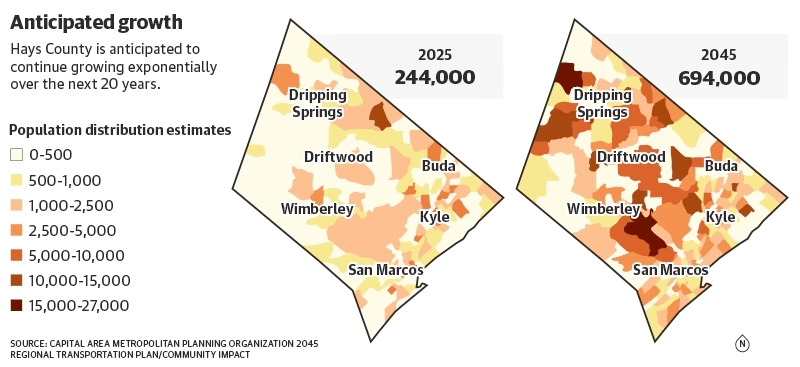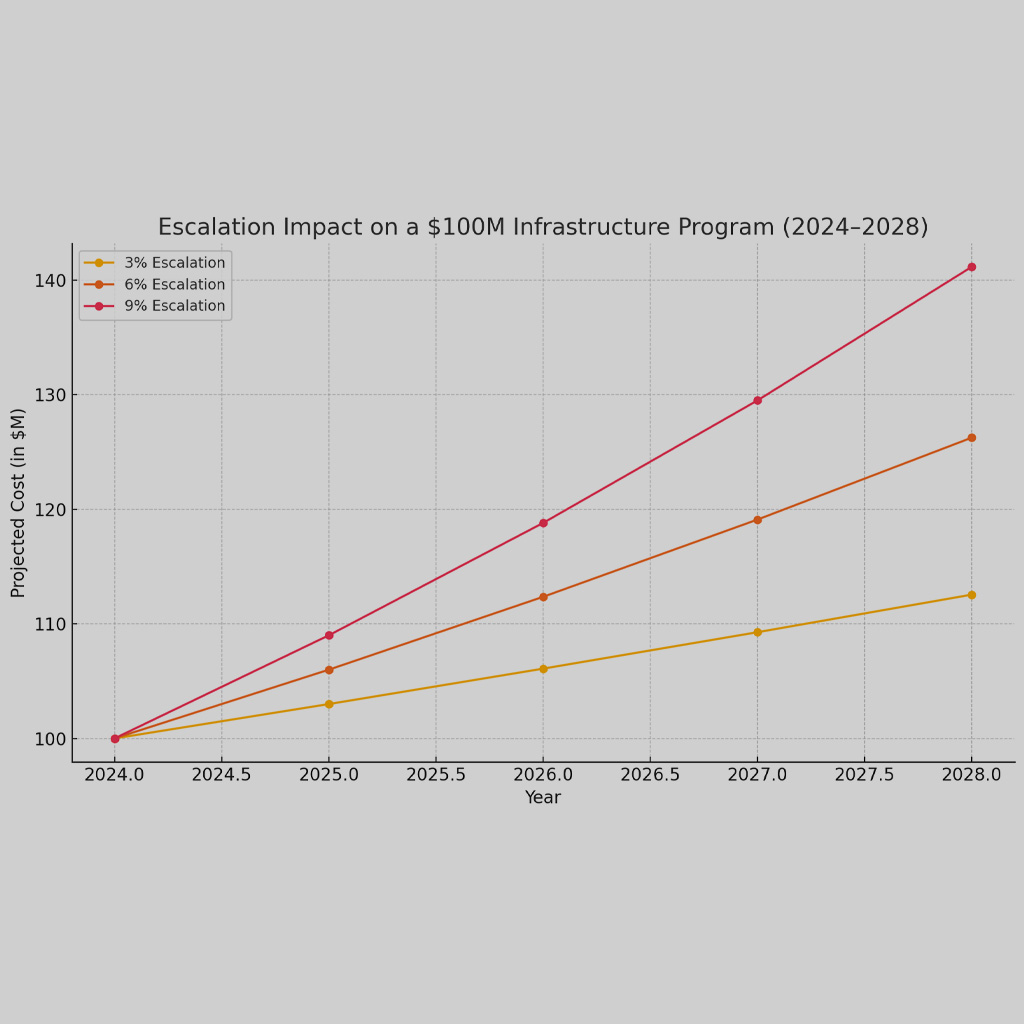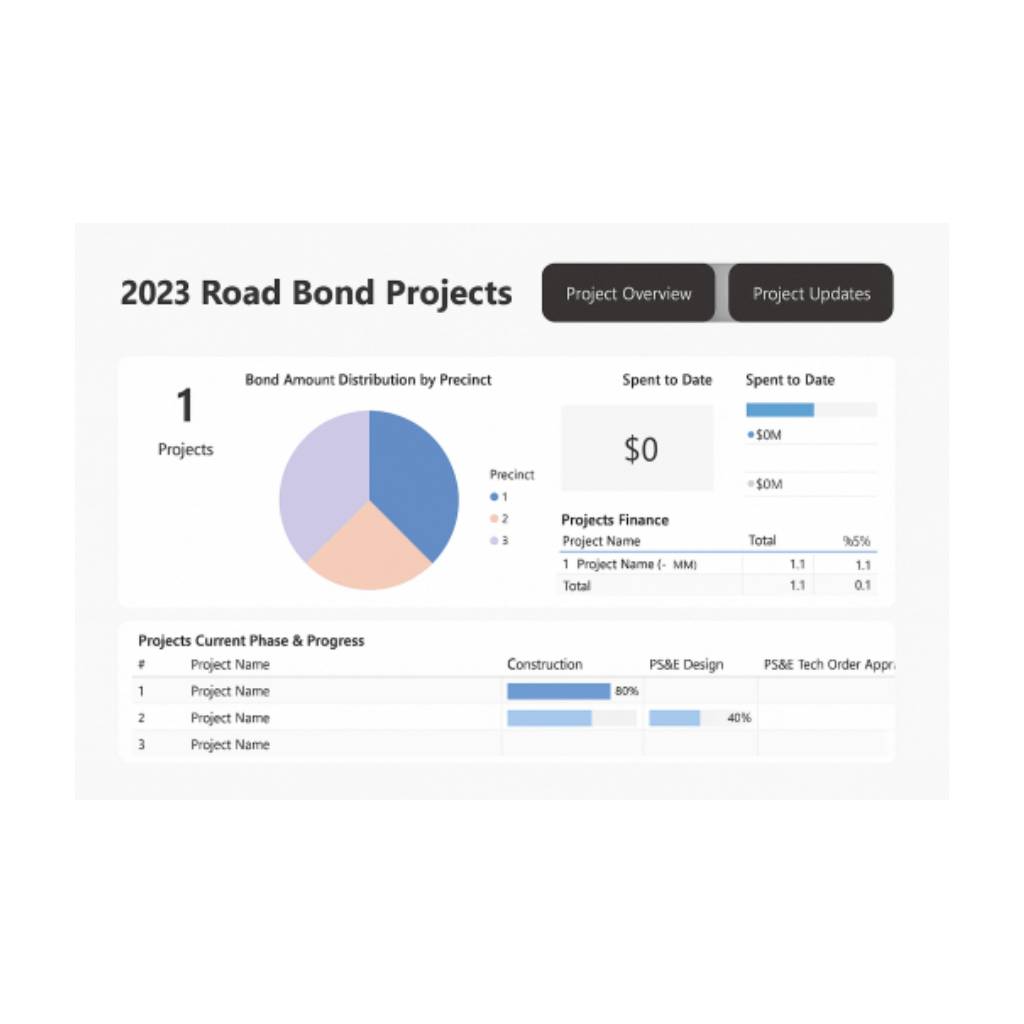A Strategic Approach to Hays County’s $440 Million Road Bond Proposal
On August 13, 2024, the Hays County Commissioners Court voted to place a $440 million road bond proposal on the November 2024 ballot. This decision comes as part of a larger, ongoing effort to address infrastructure needs throughout the county. The proposed bond focuses heavily on improving mobility, especially through enhanced connectivity between the east and west corridors of Hays County. This bond represents a significant step in Hays County’s Capital Improvement Program (CIP), aimed at ensuring the county’s infrastructure keeps pace with rapid population growth and development. This article explores the foundational aspects of CIP, how the bond will affect municipal infrastructure development, and the long-term implications of the proposed projects.
Capital Improvement Programs (CIP) and the Need for Infrastructure Investment
At the core of any successful municipal infrastructure development effort is a well-structured Capital Improvement Program (CIP). CIPs are essential planning tools that outline large-scale infrastructure projects over multiple years, ensuring that municipalities can meet both current and future demands. In Hays County, the proposed $440 million bond follows the principles of CIP by focusing on key infrastructure projects that will have lasting economic and social impacts on the community.
The community needs assessment process plays a vital role in shaping these projects. The latest needs assessment for Hays County, as highlighted by the bond proposal, identified several critical issues, including traffic congestion and the need for improved road connectivity. These mobility concerns are particularly significant in rapidly growing regions like Hays County, where existing infrastructure can quickly become insufficient to meet the demands of new residents and businesses.

CIP Bond Program and Municipality Financial Health
The CIP Bond Program proposed by Hays County will be funded through general obligation bonds, which will be backed by taxpayer dollars. These bonds are a common method used by municipalities to fund large-scale infrastructure projects, spreading the financial burden over many years. According to the article from Community Impact on August 16, 2024, Hays County last approved a road bond in 2016, and a park improvement bond was passed in 2020, demonstrating a steady commitment to investing in the county’s infrastructure.
Bonds are typically used because they allow municipalities to maintain their financial health while funding essential infrastructure improvements. General obligation bonds, such as those proposed for this road bond, are secured by the municipality’s ability to levy taxes, ensuring that the debt can be repaid. This kind of bond differs from revenue bonds, which are repaid through income generated by the projects themselves, such as toll roads or utility fees. The choice between revenue bonds and general obligation bonds can have a significant impact on a municipality’s debt capacity and overall financial stability.
Funding Sources and Long-Term Strategic Planning for CIP
Securing appropriate funding sources for CIP projects is one of the most critical challenges municipalities face. In the case of Hays County, the proposed road bond will provide $440 million to fund 35 transportation projects, although some sources indicate there may only be 31 projects listed on the County’s page. This funding will cover a variety of mobility improvements, with a focus on connecting the east and west parts of the county. However, as the Community Impact article points out, 65% of the budget is tied to projects that require partnerships with local and state governments. These intergovernmental collaborations are crucial for ensuring that the road projects meet both local and regional transportation needs.
Long-term strategic planning is at the heart of any successful CIP. Hays County’s decision to prioritize mobility improvements is driven by an understanding of how future growth will place additional pressure on existing infrastructure. By planning for the long term, the county can ensure that new roadways and transportation networks are able to accommodate future residents and businesses, supporting continued economic development in the area.
Community Engagement in Infrastructure Development
Community engagement is a key component of any CIP process, ensuring that the needs and concerns of residents are considered when planning large infrastructure projects. In the case of Hays County, the decision to put the $440 million road bond on the November 2024 ballot reflects a commitment to public input. Residents will have the opportunity to vote on whether or not they support the proposed bond and its associated projects. The Community Impact article notes that the 2024 bond proposal focuses on improving connectivity within the county, a priority that reflects input from local stakeholders and previous planning efforts.
Engaging the community in the decision-making process also fosters greater transparency and accountability. It ensures that the bond proposal addresses the most pressing needs of the community while also allowing residents to voice their concerns about potential impacts, such as increased taxes to cover bond repayments.
Economic and Social Impacts of Infrastructure Investments
Investing in infrastructure through a CIP bond program has wide-ranging economic and social impacts. Improved road connectivity can lead to reduced traffic congestion, lower commute times, and increased property values, all of which can have a positive impact on the local economy. In addition, new infrastructure projects create jobs, both during the construction phase and afterward, as improved mobility attracts new businesses and residents to the area.
As noted in the Community Impact article, Hays County’s road bond is part of a broader effort to improve regional connectivity, particularly between the east and west corridors of the county. By enhancing these connections, the county can facilitate greater economic development and improve access to essential services for residents. This is especially important in rapidly growing areas like Hays County, where infrastructure must keep pace with the demands of new development.
Project Management Frameworks and Infrastructure Sustainability
Successful implementation of CIP projects requires the use of effective project management frameworks. These frameworks ensure that projects are completed on time, within budget, and to the required specifications. Hays County’s road bond proposal includes 35 (or 31, according to the County’s website) transportation projects, many of which will require coordination with local and state partners. Strong project management will be essential to ensure that these projects are completed efficiently and that any potential issues are addressed promptly.
Infrastructure sustainability is another critical consideration for modern CIP projects. Sustainable infrastructure ensures that new developments are designed to meet the needs of current residents without compromising the ability of future generations to meet their needs. Hays County’s road projects must take into account factors such as environmental impact, future population growth, and long-term maintenance needs to ensure that the new infrastructure is both cost-effective and environmentally responsible.

Public Safety and Sustainable Development
In addition to mobility improvements, the proposed bond will also support investments in public safety facilities. Roads are a vital component of public safety, as they ensure that emergency services can respond quickly to incidents and that residents can evacuate safely in the event of a disaster. By improving road connectivity, Hays County can enhance public safety across the region.
Finally, the bond proposal reflects the county’s commitment to sustainable development. As noted in the Community Impact article, 60% of the bond will focus on improving mobility, which is essential for supporting sustainable growth in the region. Sustainable development emphasizes the importance of balancing economic growth with environmental preservation and social equity, ensuring that the benefits of new infrastructure projects are shared by all residents.
Conclusion
As Hays County prepares for the November 2024 vote on the $440 million road bond proposal, it is important to consider the broader context of Capital Improvement Programs (CIP) and municipal infrastructure development. The bond proposal represents a significant investment in the county’s future, with far-reaching economic and social impacts. Whether through general obligation bonds, strategic partnerships, or sustainable development principles, Hays County is taking steps to ensure that its infrastructure can meet the demands of future growth while improving the quality of life for current residents.













